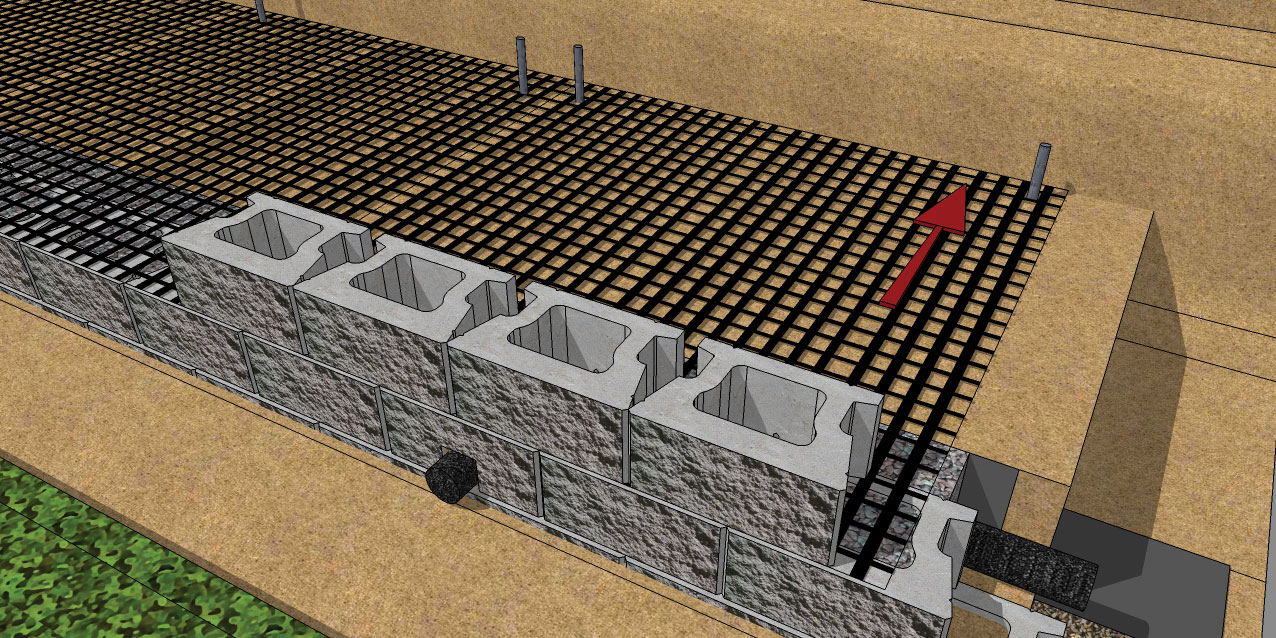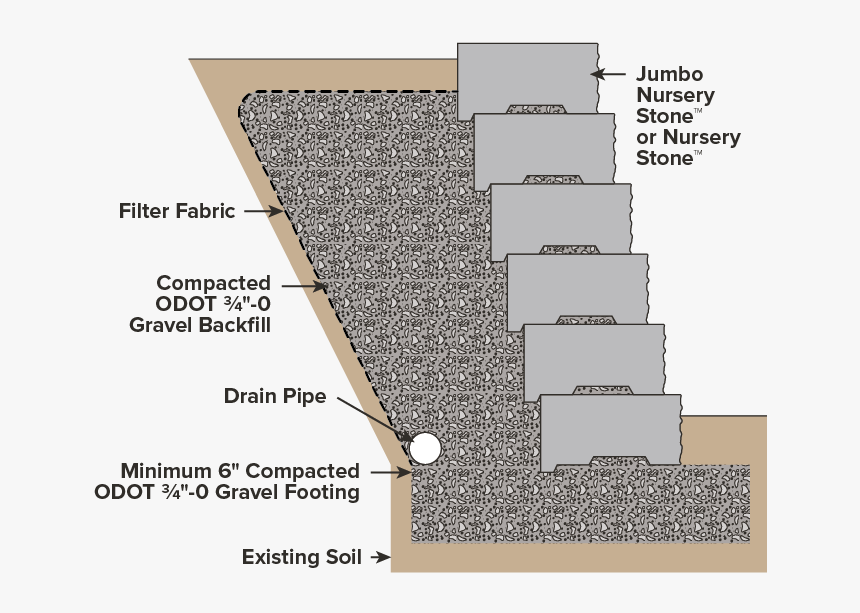What is the main function of a retaining wall?
Retaining walls are relatively rigid walls used for supporting soil laterally so that it can be retained at different levels on the two sides. Retaining walls are structures designed to restrain soil to a slope that it would not naturally keep to (typically a steep, near-vertical or vertical slope)
What is Geo-Grid Technology for Retaining walls?
Geo-Grid technology to maximize the strength of your new retaining wall. Please ask us about Geo Grid when you contact us regarding your next retaining wall project. Designed to help stabilize a retaining wall, retaining wall geogrid provides additional support to prevent wall collapse and movement. We offer both biaxial and uniaxial types which can be installed either perpendicular or parallel to the wall. Various sizes and grades are available.
 Does a Retaining Wall Add Value?
Does a Retaining Wall Add Value?
Adding a retaining wall is a simple and inexpensive approach to raise the value of your house. If you’re adding a wall made out of natural materials, you’ll find it simple to alter or replace it as needed. They also increase the adaptability of the space surrounding it.
How to Build a Proper Retaining Wall with Geogrid Fabric (Stabilizing Grid):
Retaining walls play a very important role in protecting landscapes from natural elements. It is essential that the wall is constructed correctly using the proper material to ensure long term stability. If corners are cut and stabilizing grid is not used the wall can lose stability and fall, endangering people and damaging the landscape. When hiring professionals to do the work, always check their experience in this area of construction.
There are several reasons why retaining walls fail. The most common being inadequate drainage behind the wall. With poor drainage, moisture circulates, freezes, and thaws which can happen on a daily basis during the colder seasons. Some northern states experience this more often during spring months and then again in the fall. With a clay back-fill, during the evenings freeze sets in and then ice starts melting and working its way deeper into the surrounding area and pushes outward.
In other cases, the walls are being forced to hold back more soil than they can handle. While in most cases this is caused by novices who really do not know how to properly construct a retaining wall, there have also been cases with landscapers, who should know better, doing the same thing.
If a retaining wall is built too high there will be no reinforcement to handle the force. Customers are spending thousands of dollars to build these retaining walls and then thousands more to tear them down and start all over again. Anyone can go search online about failing retaining walls and discover just how disastrous the outcome can be.
How A Good Retaining Wall Is Constructed:
A retaining wall is actually quite straight forward and the materials needed are not overly expensive. In order to construct the wall properly the process will require some additional digging, backfilling and compacting. The upside, its very inexpensive compared to the cost of having to start all over again.
Sadly, many people, in an effort to save time and cost, do not know about stabilizing grid and whether they even need it in their construction. In many cases, they will hire contractors who truly do not understand how a retaining wall actually operates or when stabilizing grid is needed. The money they end out saving, gets spent when the wall needs to come down and they have to start over.
Retaining wall reinforcement grid (stabilizing grid) from SRW is a woven fabric that is extremely strong. This fabric has high tensile strength and is pinned between the layers of the retaining wall. This extends into the soil the wall is retaining and locks the block or stone wall together with the soil behind.
When is a Stabilizing Grid Needed:
Determining wether stabilizing grid is needed for your wall will depend on the wall-building material as well as the type of soil to be retained. Clay soils, for example, swell when moist and retain water and thus are the hardest to retain. When clay soil is to be retained, a stabilizing grid is highly recommended.
The material used for a retaining wall matters a great deal, the more massive the material is, the less stabilizing grid will need to be used. For example, most six inch or eight inch wide split face limestone walls, stabilizing grid should be considered if the exposed height is over 24”.
stabilizing grid is most desirable for man made walls with a height of 36” to 48”, depending on the design and size. If there is a slope at the base of the wall stabilizing grid should also be taken into consideration.
Once you have a wall that is over 6 ft in height, constructed with 24”or wider limestone or similar blocks and very dense material, stabilizing grid should be used. (Landscape discount help provide this information).



